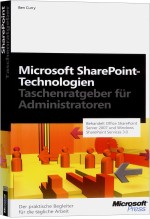If you are interested in this book you can read the complete seventh chapter right here on navision-blog.de:
Chapter 1
The purpose of this chapter is a teaser introduction to get you excited about the product, what’s in it in general, and what’s in it as compared to previous versions, to give you a little taste of what’s coming up in the book, and explain what the fuss about this new release is all about.
Chapter 2
The RoleTailored client is the new user interface for users of Microsoft Dynamics NAV 2009, and it is completely different to the pervious versions. We’ll take you through the different components of the interface, introduce the terminology, explore the navigation components and page types, and teach you how to personalize the application to meet your own requirements using the extensive personalization features.
Chapter 3
Microsoft Dynamics NAV 2009 introduces a new paradigm to ERP. Instead of the system being focused on the forms that capture and present data and the functions the user can perform, the system is based around the individuals within an organization, their roles, and the tasks they perform. We cover how Microsoft researched the roles and explore the departments, roles, and tasks that have been identified in the Microsoft Dynamics Customer Model. We also show the reader how to assign the standard roles to users, how to create new roles, and how to allow departmental super users to configure the application for their role so that the change is applied to all users with the same profile.
Chapter 4
Microsoft Dynamics NAV is not a product with a Next-Next-Finish type of installation, and it takes a lengthy project to deploy it successfully. We focus on the six phases of the implementation process, and explain each phase with detailed dos and don’ts for a typical implementation. Based on the Dynamics Sure Step implementation methodology with advice liberally sprinkled throughout, special attention is given to new features of Microsoft Dynamics NAV 2009, and where the new capabilities must be taken into account to make most out of the implementation project.
Chapter 5
Every implementation of Microsoft Dynamics NAV 2009 will require the system to be configured to meet the needs of the business. This chapter tells the implementation consultant how to do this from a core financials perspective and provides valuable information that will allow developers to understand more about the application they are changing. We cover basic accounting for programmers, dimensions, and posting groups, and how to use the Rapid Implementation Methodology (RIM) Toolkit to speed things along.
Hardly any standard system can fit the needs of a business out of the box. Either the customer must shape their processes to match the system, or the consultant must shape the system to match the processes, and usually the latter prevails. This chapter explains the process of modifying the system, how to design a viable data model, and how to design and develop a functional user interface for both RoleTailored and Classic clients, without writing any code.
The three-tiered architecture of Microsoft Dynamics NAV 2009 and native Web Services Enablement open up a whole new world of possibilities for NAV implementations. We cover some of the many possibilities for extending the application, allowing the consultant and developer to understand the technologies that are available and their respective design considerations. Our practical examples introduce the NAV programmer to the world of .NET and show how you can use the information available on the internet to develop your own killer .NET add-ons.
Chapter 8
There’s much more to development than programming. It starts with understanding what customer really needs, and usually extends way beyond the system being deployed to a test environment. This chapter focuses on the development phase, and what it takes to get from a concept to a live and working solution.
Chapter 9
After the system goes live, or as it grows, there are periods when new problems may arise, and often their source is far from obvious. This chapter explores the tools and techniques available for detecting problems, pinpointing the source, and helping to remove them from the system quickly and painlessly. It explains how to debug the Service Tier, how to troubleshoot performance issues, what can be done to avoid problems, and how proper planning before design can help to get it right the first time.
Chapter 10
Our sample application focuses on requirements gathering, functional specification creation, solution design, and the eventual build of a prototype. We look at how a business problem can be explored using techniques such as interviewing, use-case modeling, and object-role modeling to create a solution design that can be molded into a working prototype.






